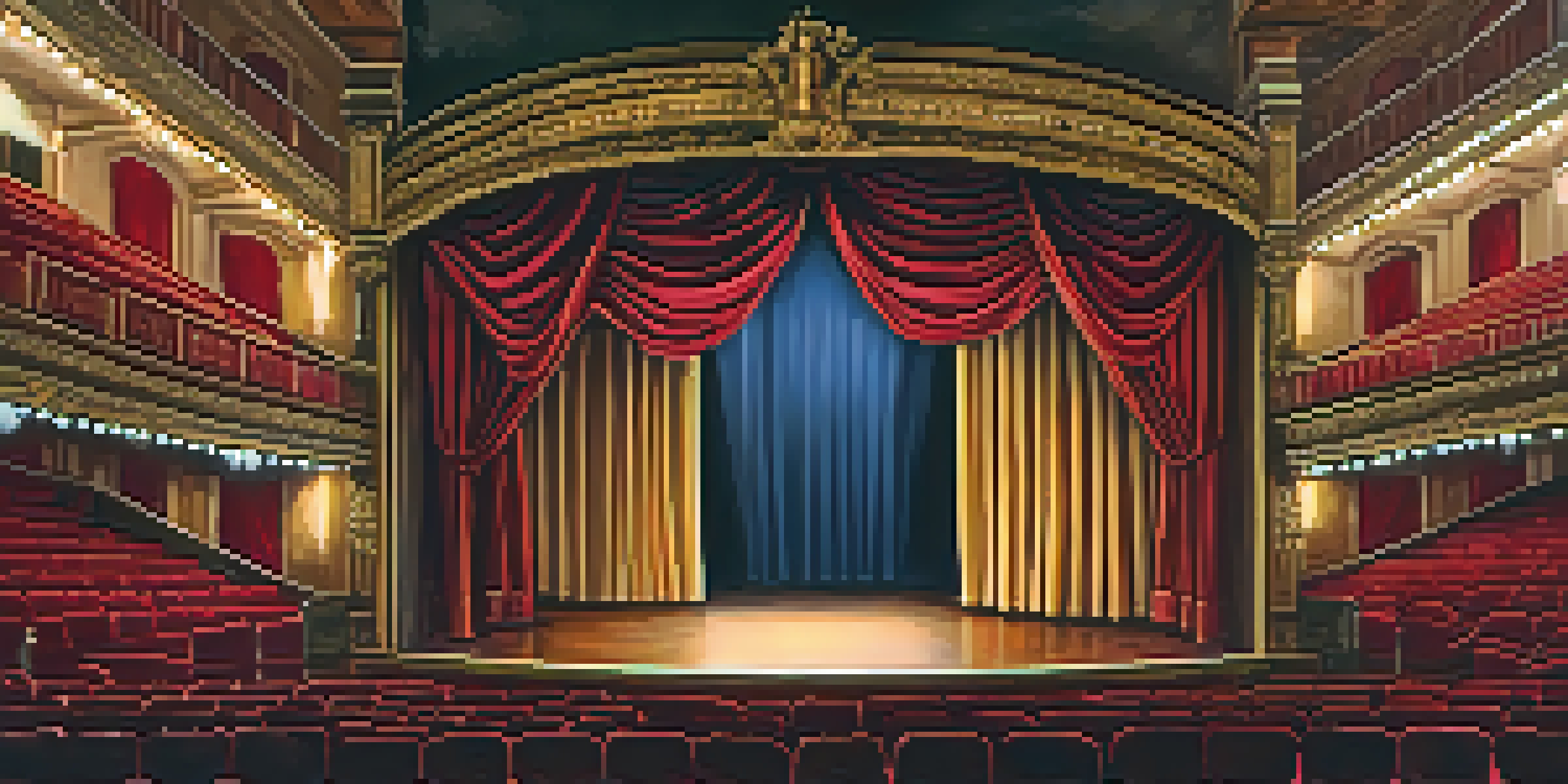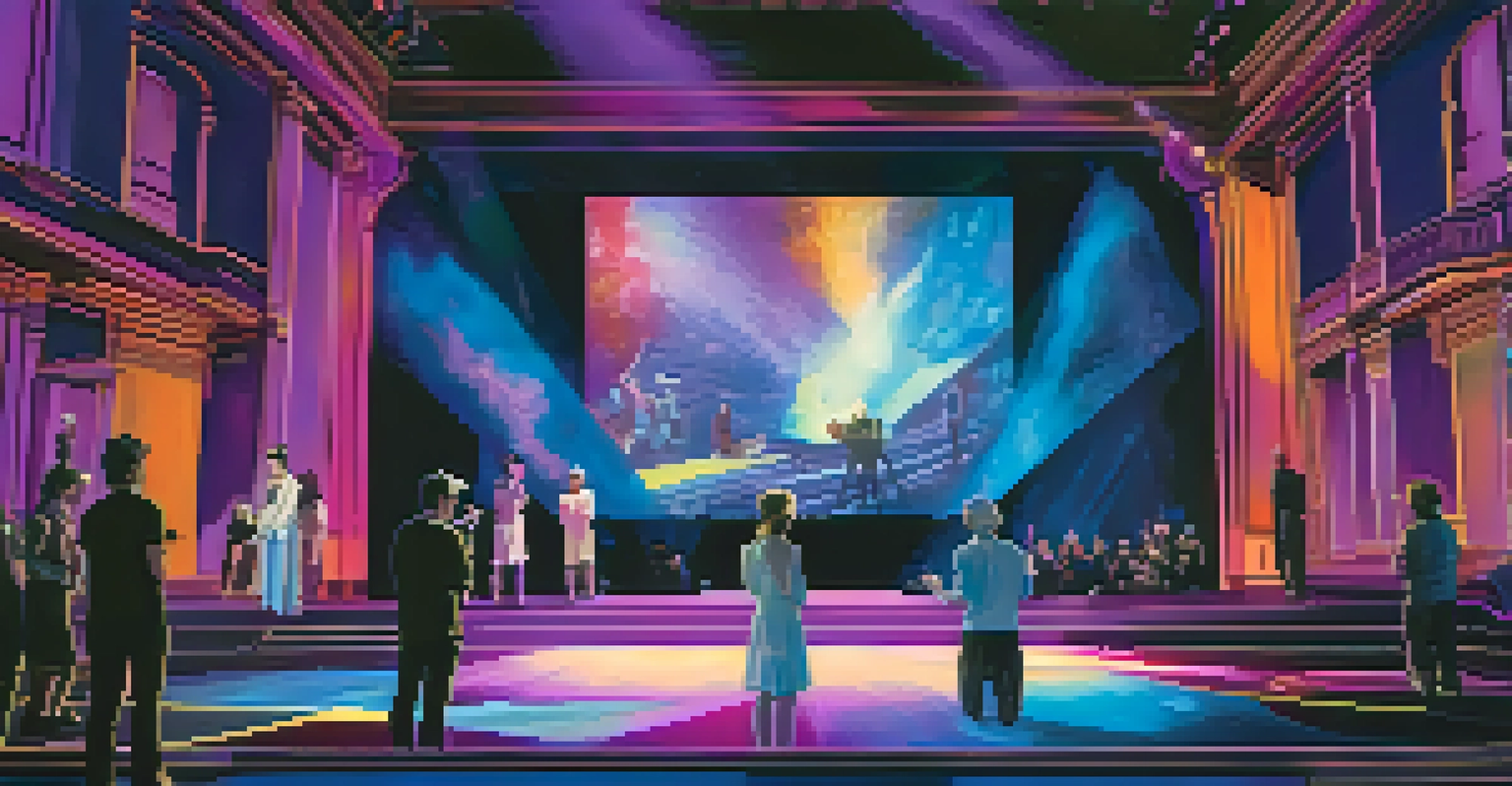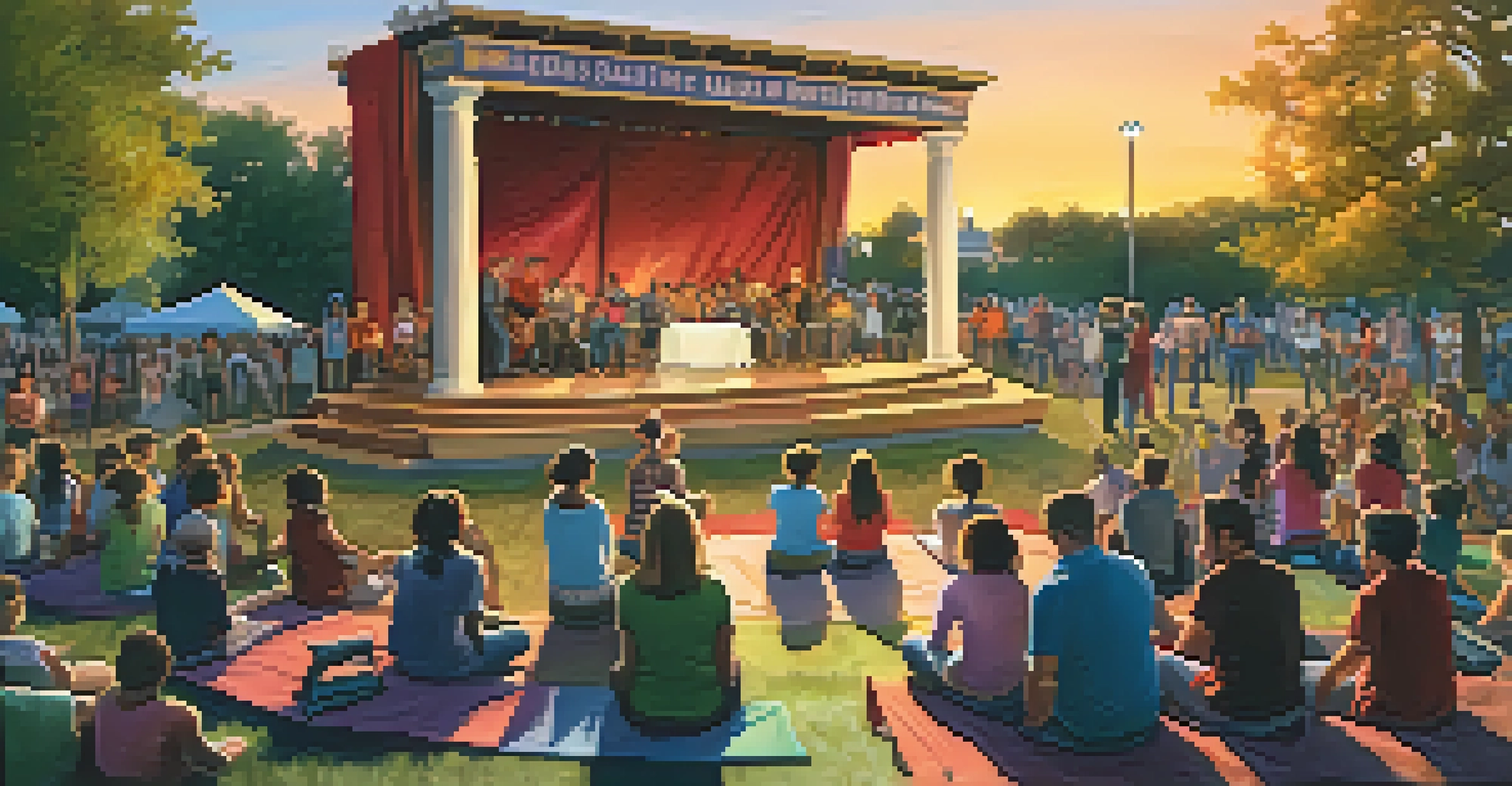Theater Scene: From Classic Plays to Modern Performances

The Rich History of Classic Theater
Classic theater has roots that trace back to ancient civilizations, where performances were often tied to religious rituals and community gatherings. Think of the Greeks and Romans, whose epic tales of tragedy and comedy laid the groundwork for modern storytelling. These classic plays often tackled universal themes like love, power, and morality, making them relevant even today.
All the world's a stage, and all the men and women merely players.
For instance, Shakespeare's works remain staples of the theater scene, captivating audiences with their intricate characters and timeless themes. The beauty of classic theater lies in its ability to transport us to different eras while still reflecting our contemporary experiences. This connection to the past enriches our understanding of human nature and society.
As we delve into the world of classic plays, we discover how they continue to influence modern performances. Many contemporary playwrights draw inspiration from these historic works, weaving elements of the classics into their narratives. This interplay between past and present ensures that classic theater remains a vital part of our cultural fabric.
The Evolution of Playwriting Techniques
Over the years, playwriting has transformed significantly, adapting to the changing tastes and sensibilities of audiences. From the structured formats of classic tragedies to the more experimental forms of modern plays, the craft of writing for the stage has evolved. This shift reflects broader societal changes and the desire for more diverse narratives.

Consider the rise of absurdist theater in the mid-20th century, which challenged traditional storytelling by presenting illogical scenarios and characters. This movement pushed boundaries and invited audiences to engage with the absurdity of life itself. Such innovations remind us that theater is not just about entertainment; it’s also a powerful medium for artistic expression and social commentary.
Classic Theater's Lasting Influence
Classic theater continues to shape modern performances, with contemporary playwrights drawing inspiration from its timeless themes.
Today, playwrights are experimenting with hybrid forms, incorporating multimedia elements and interactive experiences. This evolution is evident in works that blend traditional dialogue with digital projections or audience participation. These modern techniques not only enhance the storytelling but also make theater more accessible and engaging for diverse audiences.
The Role of Direction in Shaping Performances
The director plays a crucial role in bringing a script to life, interpreting the playwright's vision while infusing their unique style. A director's choices—ranging from casting to staging—can dramatically alter the tone and impact of a performance. For example, a contemporary interpretation of a classic play might emphasize themes that resonate with today’s audience, making it feel fresh and relevant.
The theater is a spiritual and metaphorical space, and the audience is a part of that space.
Moreover, the director collaborates closely with actors, guiding their performances to elicit authentic emotions. This partnership is pivotal in crafting a cohesive and compelling narrative that captivates the audience. When a director and cast connect deeply, the result is a performance that feels dynamic and alive.
In recent years, we've seen directors embrace more collaborative approaches, inviting input from actors and designers alike. This shift fosters a creative environment where innovative ideas can flourish, resulting in performances that surprise and delight. As theater continues to evolve, the director's role adapts, reflecting the ever-changing landscape of the art form.
The Impact of Technology on Modern Theater
Technology has revolutionized the theater experience, from lighting and sound design to visual effects and digital projections. These advancements allow for more immersive storytelling, enhancing the emotional resonance of a performance. Imagine a scene where the backdrop transforms with stunning visuals, transporting the audience to various locations seamlessly.
Moreover, technology has expanded the reach of theater beyond traditional venues. Live streaming performances and virtual reality experiences allow audiences from all over the globe to engage with productions they might not otherwise have access to. This democratization of theater opens up new possibilities for creators and audiences alike.
Technology Transforms Theater
Advancements in technology enhance the theater experience, allowing for immersive storytelling and broader audience reach.
As we embrace these technological innovations, it's essential to consider their impact on the art form. While they can enhance the experience, they also raise questions about the essence of live performance. Ultimately, the challenge lies in balancing technology with the raw, emotional connection that theater is renowned for.
Diversity and Inclusion in the Theater Scene
The theater scene is increasingly reflecting the diverse voices and stories of modern society. This shift towards inclusivity has opened the door for playwrights, directors, and actors from various backgrounds to share their unique perspectives. By embracing a broader range of narratives, theater becomes a richer and more relatable experience for audiences.
For example, productions that highlight underrepresented communities can spark important conversations and foster greater understanding. These stories often challenge stereotypes and offer fresh insights into the human experience. As a result, audiences are not just passive spectators but active participants in a dialogue that shapes cultural narratives.
Moreover, many theater companies are implementing initiatives to promote diversity in casting and production roles. This commitment to inclusion ensures that the voices of marginalized groups are heard and celebrated. As we move forward, it’s crucial for the theater to continue prioritizing diversity, enriching the art form and the community it serves.
The Future of Theater: Trends to Watch
As we look ahead, several trends are shaping the future of theater. One notable trend is the increasing fusion of genres, where traditional boundaries between drama, comedy, and musical theater are blurred. This experimentation offers audiences fresh and unexpected experiences that keep them engaged and intrigued.
Another trend is the focus on environmental sustainability within theater productions. Many companies are adopting eco-friendly practices, from using recycled materials in set design to reducing energy consumption during performances. This commitment not only helps the planet but also resonates with audiences who are increasingly aware of environmental issues.
Emphasis on Diversity and Inclusion
Theater is increasingly embracing diverse voices and narratives, enriching the art form and fostering community dialogue.
Lastly, the rise of community-based theater initiatives is fostering a greater connection between artists and their communities. These projects often involve local voices and stories, creating performances that are both meaningful and impactful. As theater continues to evolve, it will undoubtedly remain a vital space for creativity, dialogue, and social change.
Celebrating the Joy of Live Performance
At its core, theater is a celebration of live performance—an art form that thrives on the energy of both actors and audiences in the same space. There's something magical about witnessing a story unfold in real time, where every performance is unique, shaped by the moment. This live element fosters a special connection, creating lasting memories for everyone involved.
Consider the thrill of attending an opening night; the anticipation, the laughter, and even the occasional mishap all contribute to a shared experience that resonates deeply. In a world increasingly dominated by digital interactions, the intimacy of live theater allows us to connect with one another in profound ways. It reminds us of our humanity and shared experiences.

As we navigate the future of theater, let’s continue to celebrate this vibrant art form. Whether it’s a classic play or a cutting-edge performance, theater has the power to inspire, challenge, and entertain. By supporting diverse stories and innovative productions, we contribute to a thriving theater culture that enriches our lives and communities.